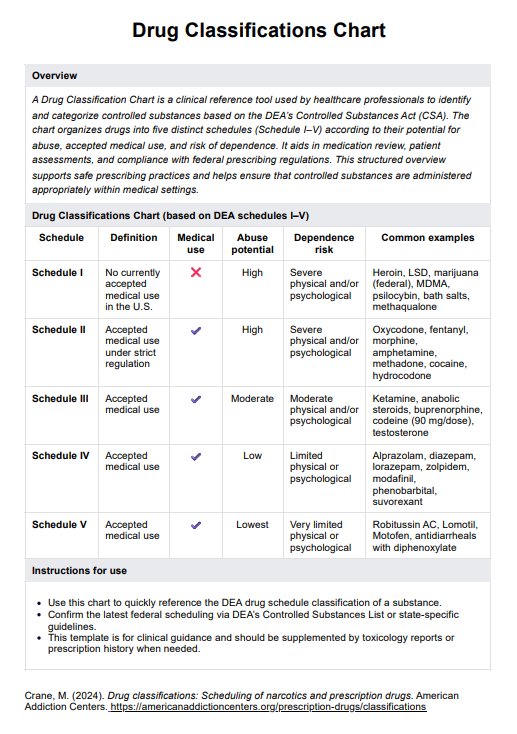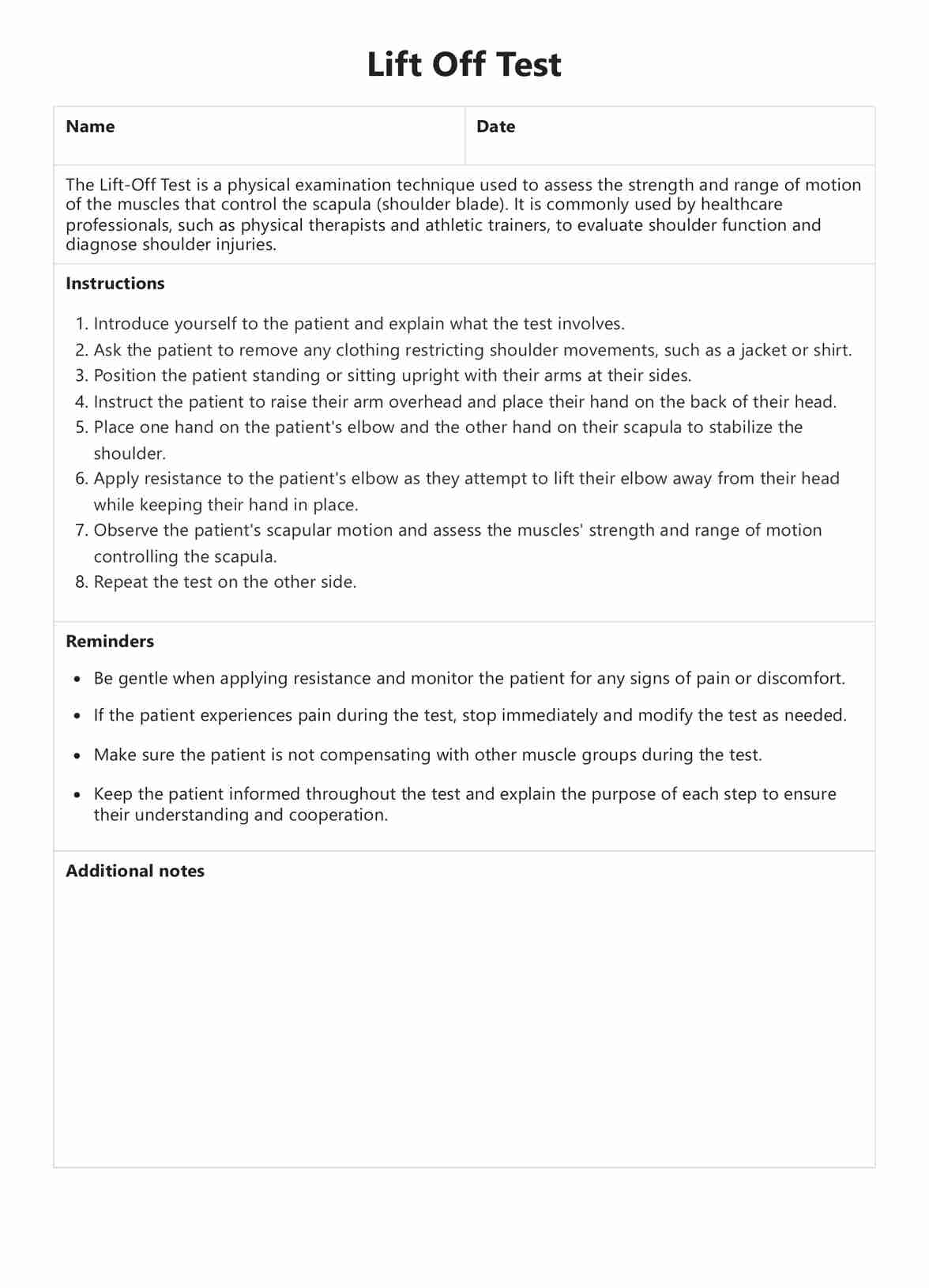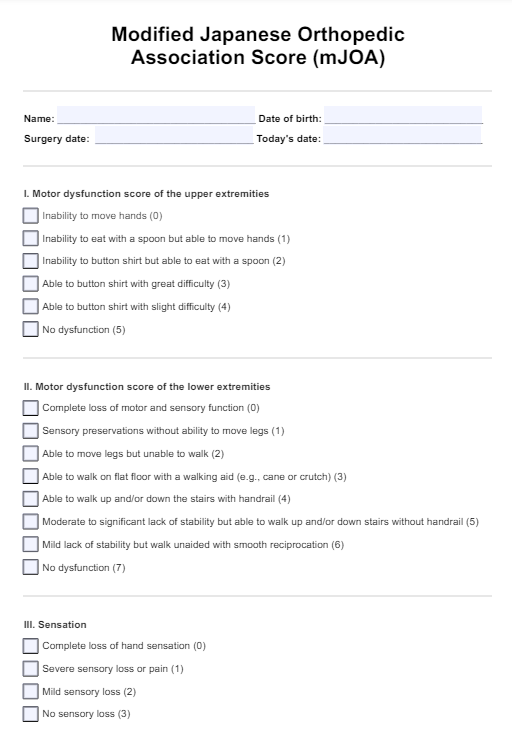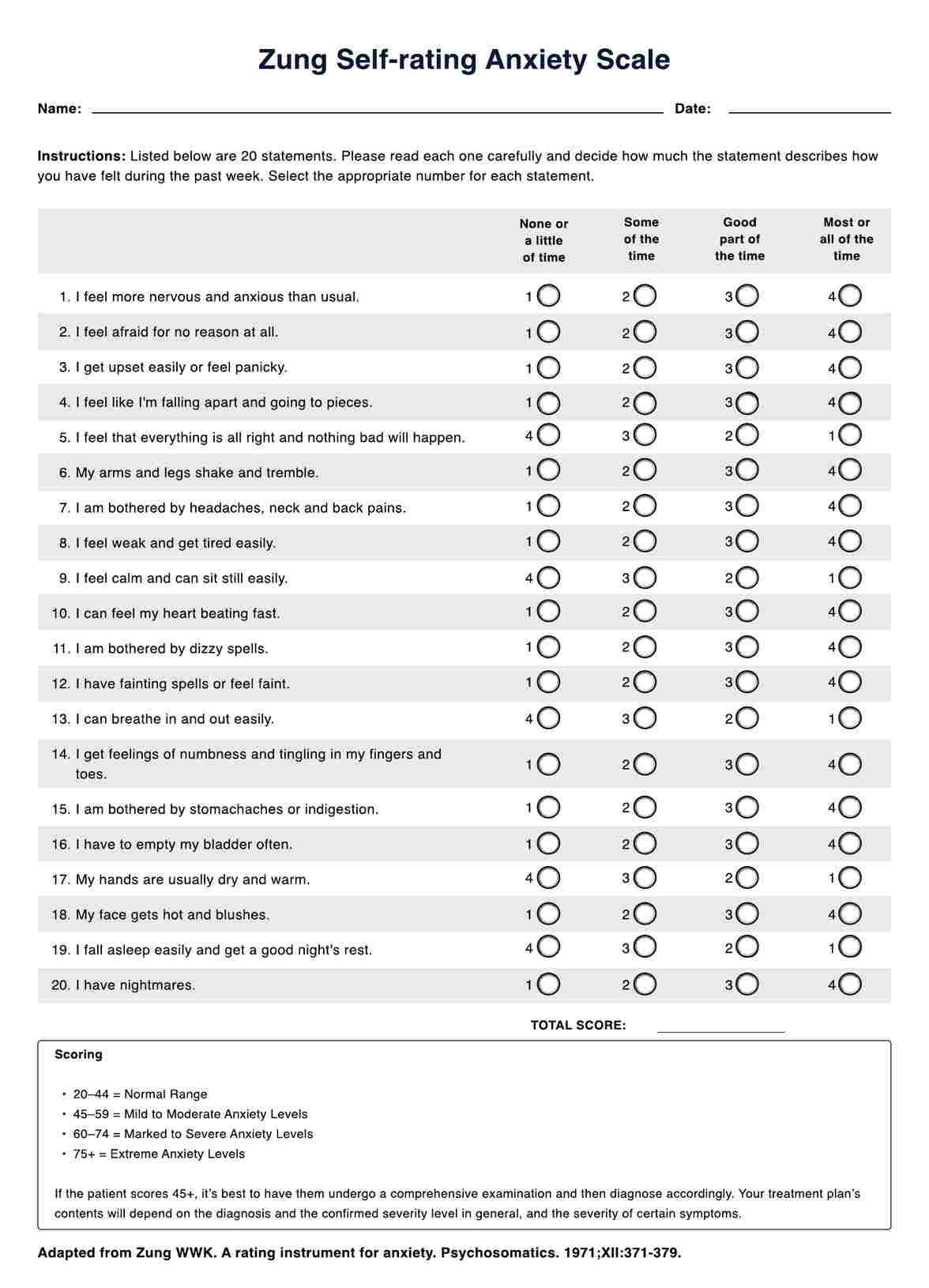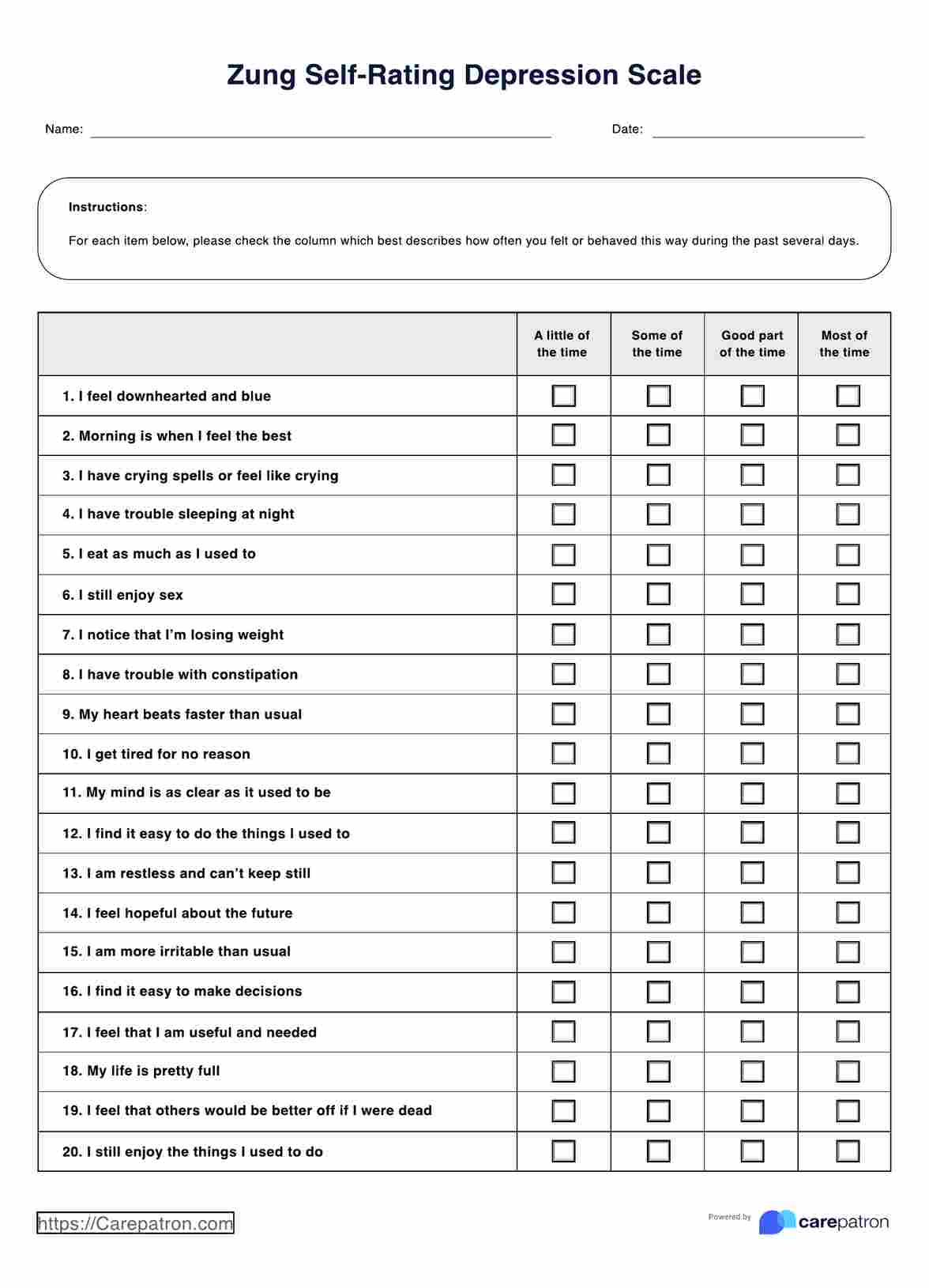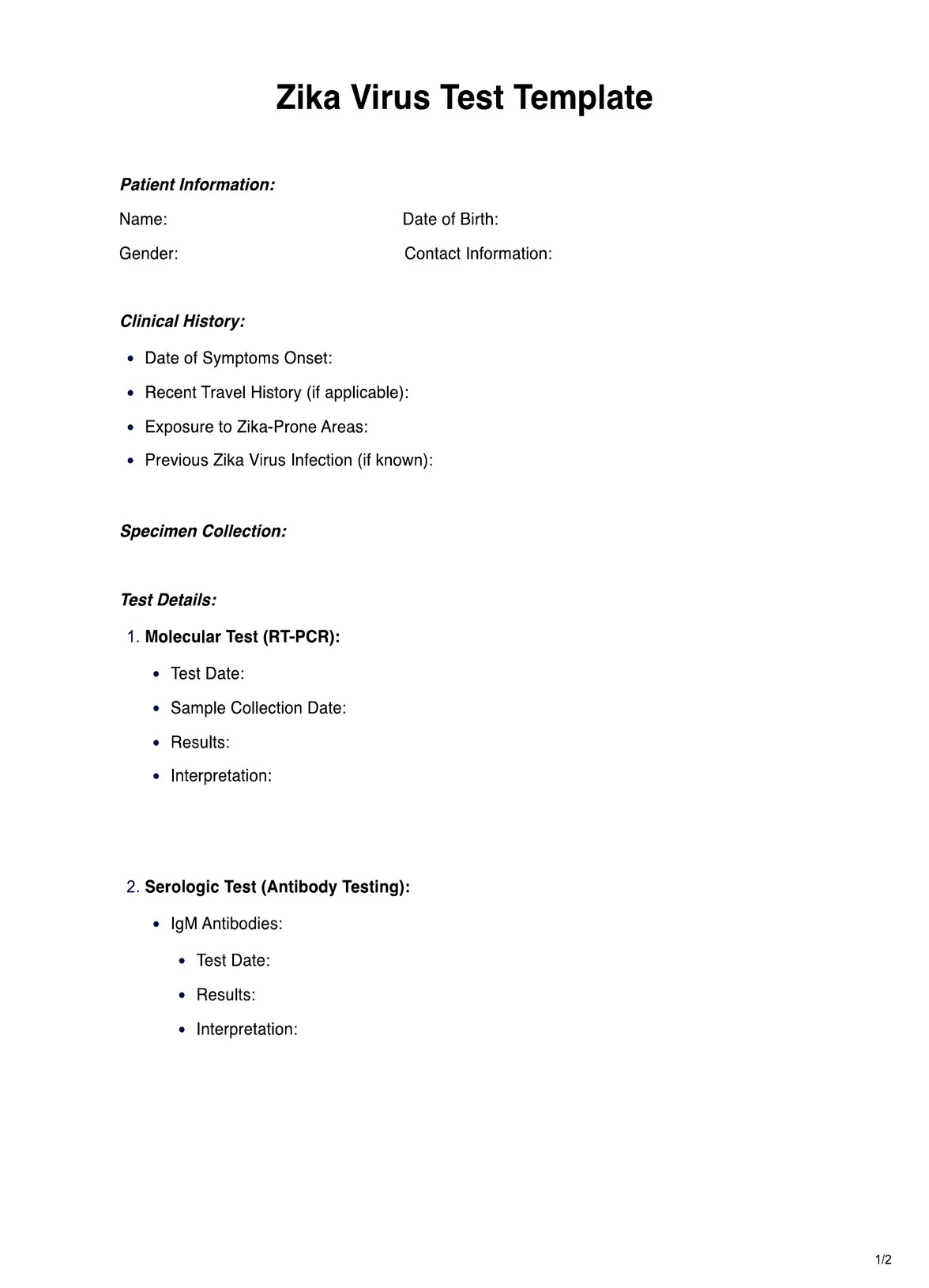The Yeoman's Test is a physical examination technique used to assess for sacroiliac joint dysfunction or inflammation (sacroiliitis). A positive result, indicated by pain in the sacroiliac region, suggests potential joint involvement. Although it does not confirm a diagnosis, it should be followed by a further evaluation to rule out other conditions.
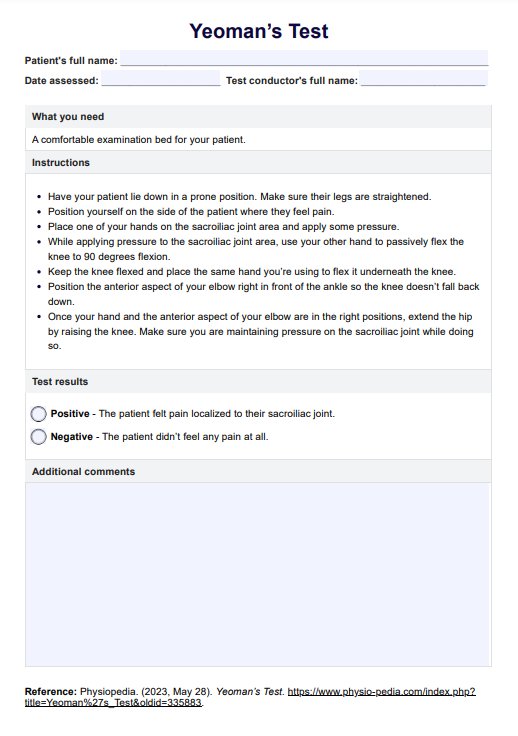
Yeoman’s Test
Conduct the Yeoman's Test to gauge if a patient's lower back pain stems from the sacroiliac joint area.
Yeoman’s Test Template
Commonly asked questions
The instructions are simple and easy to complete, so they should only take a minute or two. As soon as the patient mentions they feel or don't feel any pain when you extend the hip, you can end the test because that will determine the designation you will give.
In a way, yes. The Yeoman's Test relies on pain in the lower back or sacroiliac joint to determine if the patient is positive or negative for possible sacroiliitis or another lower back problem. But whatever pain the patient feels will be caused by the pain they've been experiencing in the first place. Since this test involves pain, the professional should be mindful and gentle to avoid aggravating or worsening it.
EHR and practice management software
Get started for free
*No credit card required
Free
$0/usd
Unlimited clients
Telehealth
1GB of storage
Client portal text
Automated billing and online payments


